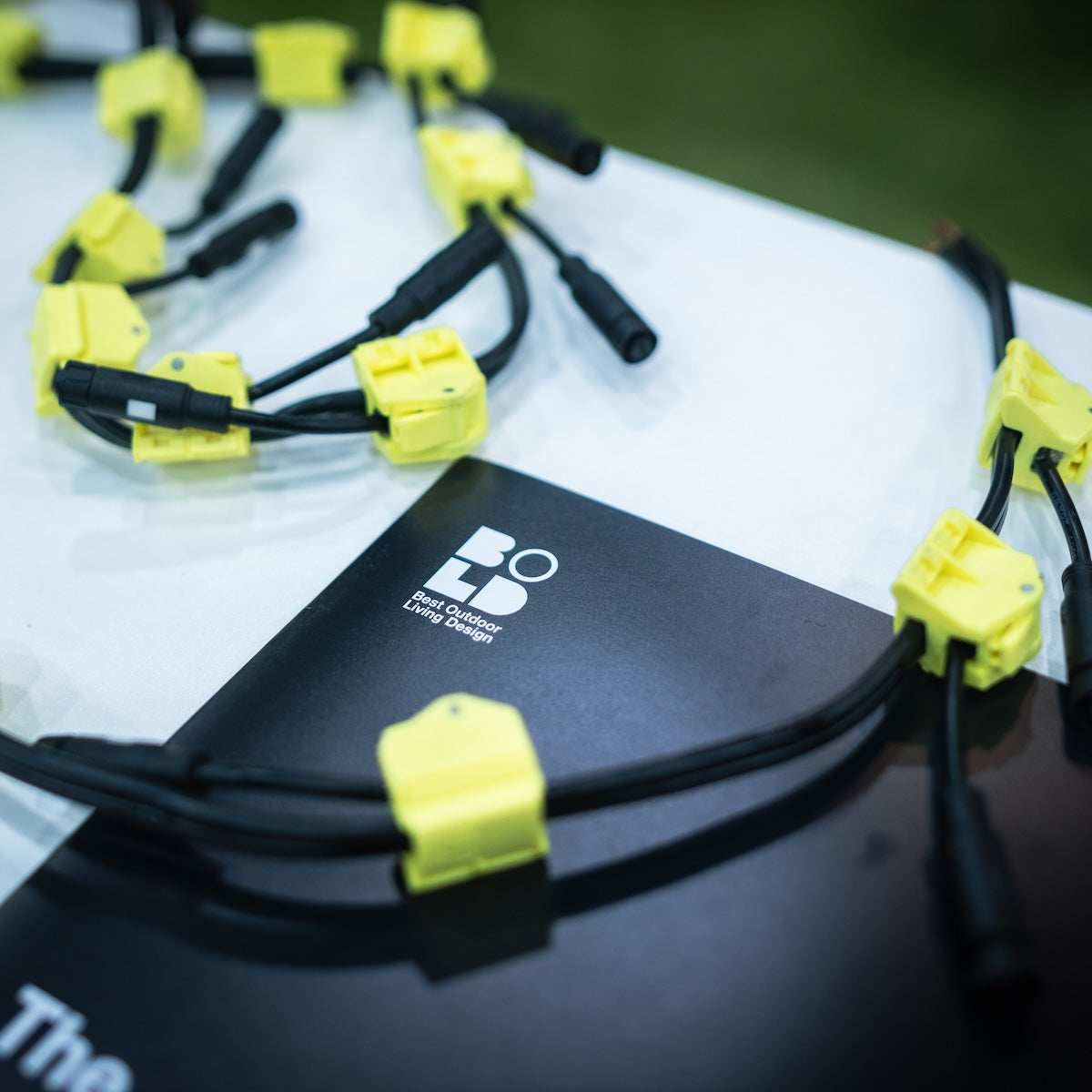Why Professional Contractors Should Offer Low-Voltage Lighting Installation
In the competitive industry of outdoor living, diversifying your services can set you apart and open up new revenue streams. One of these services is the installation of low-voltage landscape lighting. This article will explore the many reasons why you, (a landscape, hardscape, decking, or electrical professional) should consider offering low-voltage lighting installation as part of your business offerings.
What is Low-Voltage Landscape Lighting?
Low-voltage landscape lighting operates on 12 volts instead of the standard 120 volts used in most household lighting. This type of lighting is commonly used for outdoor applications, such as illuminating gardens, pathways, patios, and other landscape features. It’s powered by a transformer that reduces the standard voltage to a safer, lower level. 
Benefits of Offering Low-Voltage Lighting Installation
- Increased Revenue Opportunities
- High Demand: Homeowners are increasingly looking for ways to enhance their outdoor spaces. Offering low-voltage lighting installation can tap into this growing market.
- Upselling Potential: When working on a landscaping or outdoor renovation project, offering lighting installation as an add-on service can significantly increase the overall project value.
- Enhanced Customer Satisfaction
- Complete Solutions: By providing a full range of services, including lighting, you can offer your clients a more comprehensive and convenient solution.
- Improved Aesthetics: Properly installed low-voltage lighting can dramatically improve the look and feel of a property, leading to higher customer satisfaction and positive word-of-mouth referrals.
- Competitive Advantage
- Differentiation: Adding low-voltage lighting installation to your list of services sets you apart from competitors who don’t offer this service.
- Expertise: By becoming skilled in low-voltage lighting, you position yourself as an expert in a specialized field, which can attract more clients.
- Safety and Energy Efficiency
- Safer Installation: Low-voltage lighting is safer to install and maintain than high-voltage systems, reducing the risk of electrical shock and other hazards.
- Energy Savings: 12V low-voltage lighting is more energy-efficient when compared to your regular 120V systems, which appeals to eco-conscious clients and homeowners who wish to keep their energy bill lower after install.
- Year-Round Work Opportunities
- Seasonal Flexibility: Unlike some outdoor projects that are weather-dependent, low-voltage lighting can be installed year-round, providing steady work during slower seasons.
- Maintenance Contracts: Offering maintenance services for installed lighting systems can create recurring revenue and foster long-term client relationships.
- Minimal Disruption
- Less Intrusive: Installing low-voltage lighting typically involves less disruption to the client’s property compared to other types of installations.
- Quick Installation: Projects can often be completed quickly, leading to faster turnaround times and more satisfied clients.
How to Get Started
- Training and Certification. The work you do is hard, but landscape lighting isn't when you choose the right brand. Learning the basics of low-voltage lighting is easy, and installation can be even easier. Look for companies that offer quick connectors so that you don't have to worry about splicing wires. Anyone can install low-voltage lighting, you don't need to be experienced and you don't need to be an electrician.
- Gain Knowledge: Enroll in courses or workshops that focus on low-voltage lighting installation. Many manufacturers offer training programs.
- Certification: Obtain certifications from recognized organizations to demonstrate your expertise and commitment to quality.
- Build a Portfolio
- Showcase Your Work: Create a portfolio of completed low-voltage lighting projects to show potential clients the quality and range of your work.
- Customer Testimonials: Collect and display testimonials from satisfied customers to build trust and credibility.
- Partner with Suppliers
- Reliable Sources: Establish relationships with reputable suppliers who can provide high-quality low-voltage lighting products. Choose a manufacturer who you trust and will be there to support you with your installations or product questions.

- Market Your Services
- Online Presence: Use your website, social media, and online advertising to promote your new service. Highlight the benefits and showcase your portfolio.
- Local Advertising: Advertise in local newspapers, magazines, and community boards to reach homeowners in your area.
Conclusion
Offering low-voltage lighting installation can be a game-changer for professional contractors. It not only opens up new revenue streams but also enhances customer satisfaction, sets you apart from the competition, and provides year-round work opportunities. By investing in training, building a strong portfolio, partnering with reliable suppliers, and effectively marketing your services, you can successfully integrate low-voltage lighting installation into your business and enjoy the many benefits it brings.
Embrace the opportunity to light up your clients' outdoor spaces and watch your business shine brighter than ever before.
If you have questions about installing low voltage LED lighting, or if you want to learn more about BOLD, you can reach out to support@boldpros.com or give us a call at 1-833-472-9960.
















